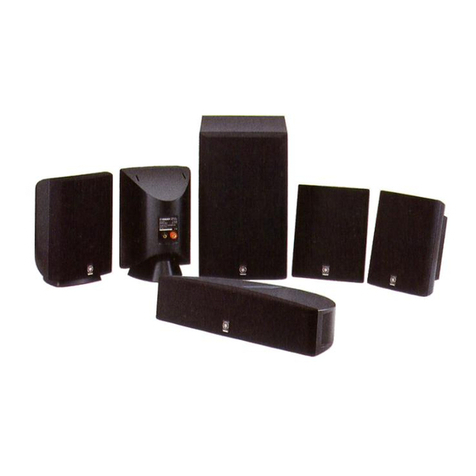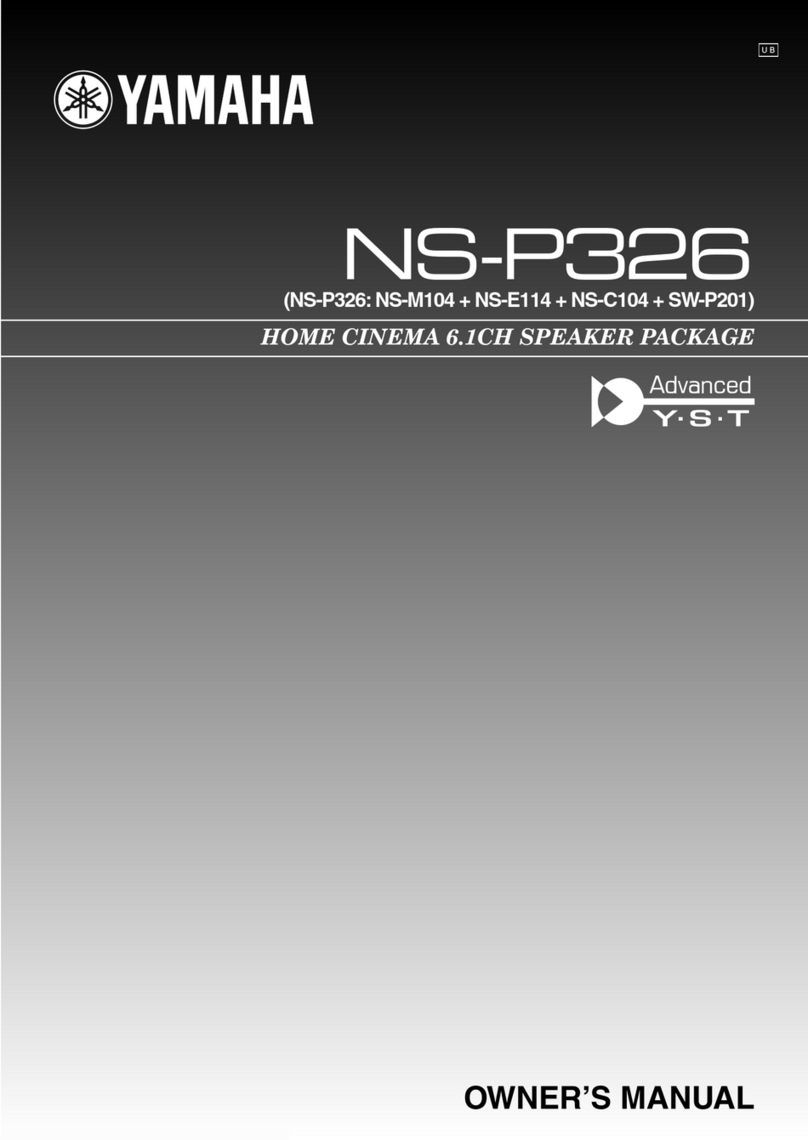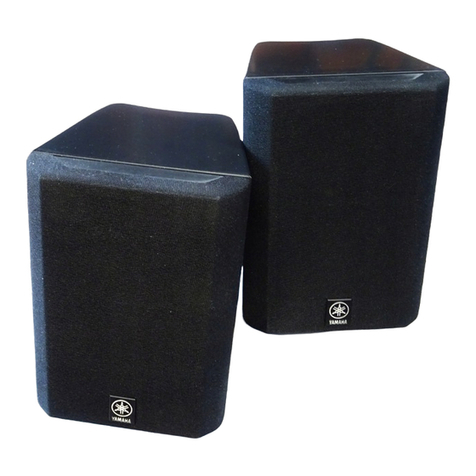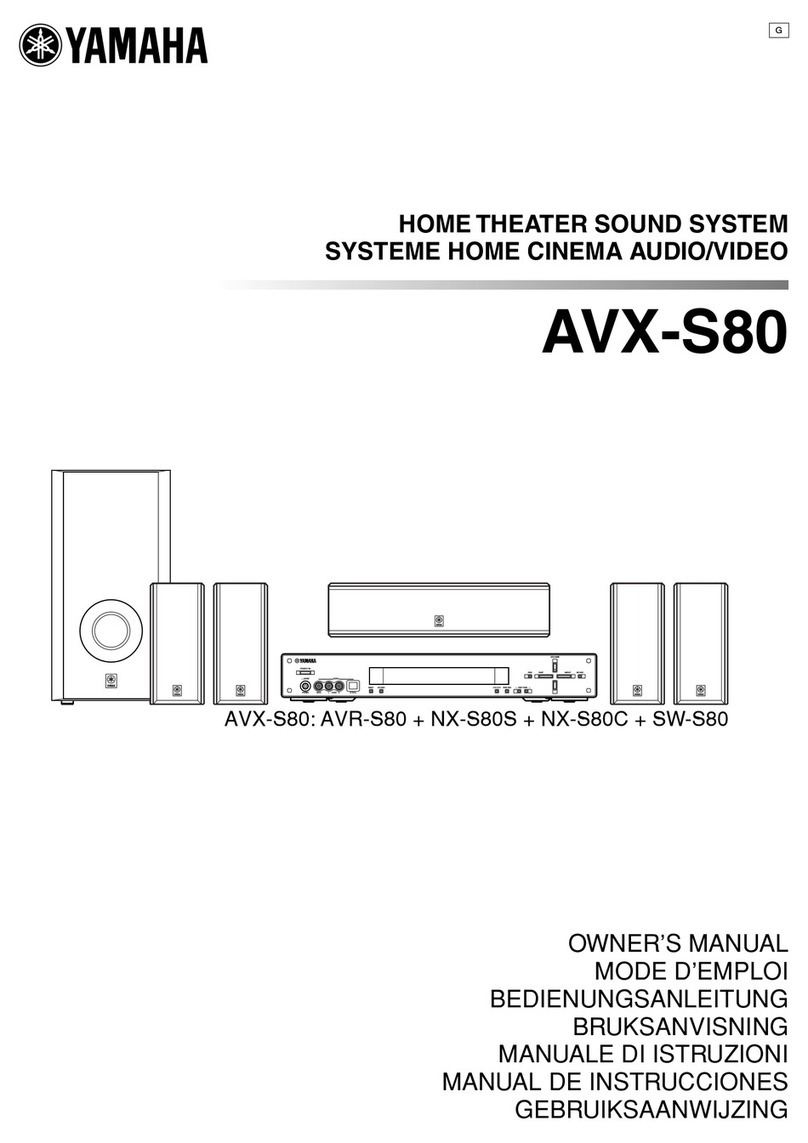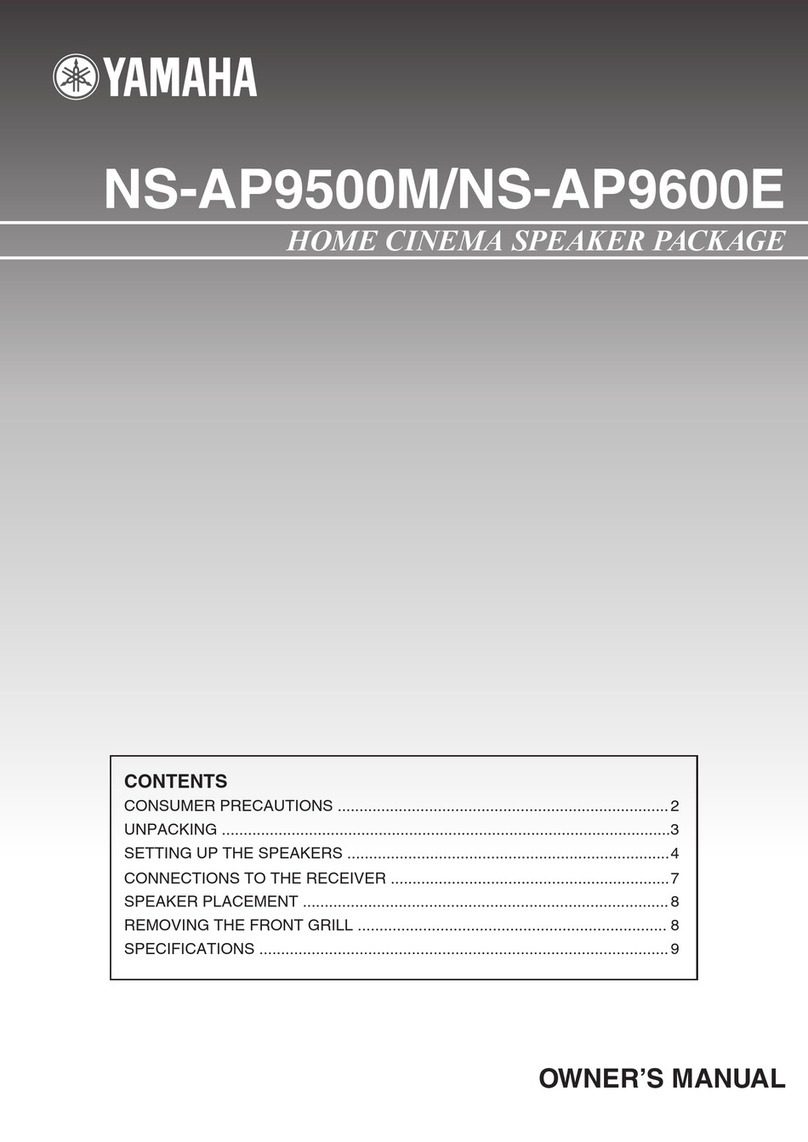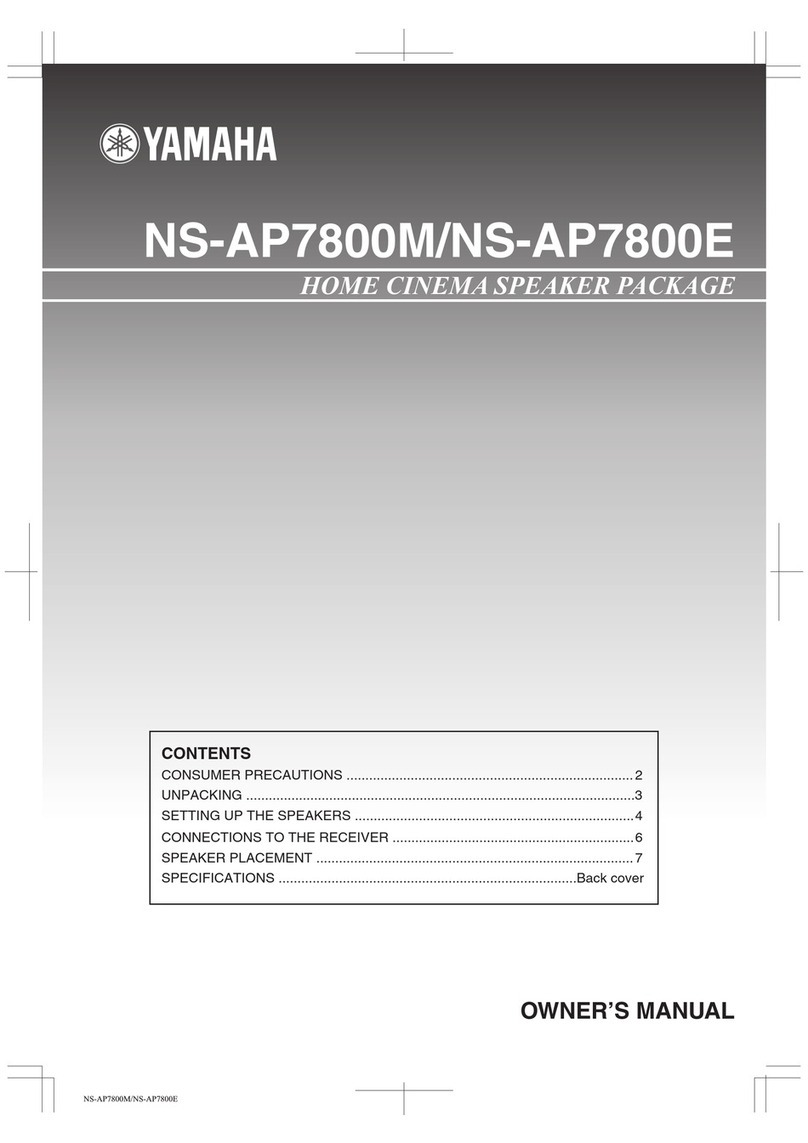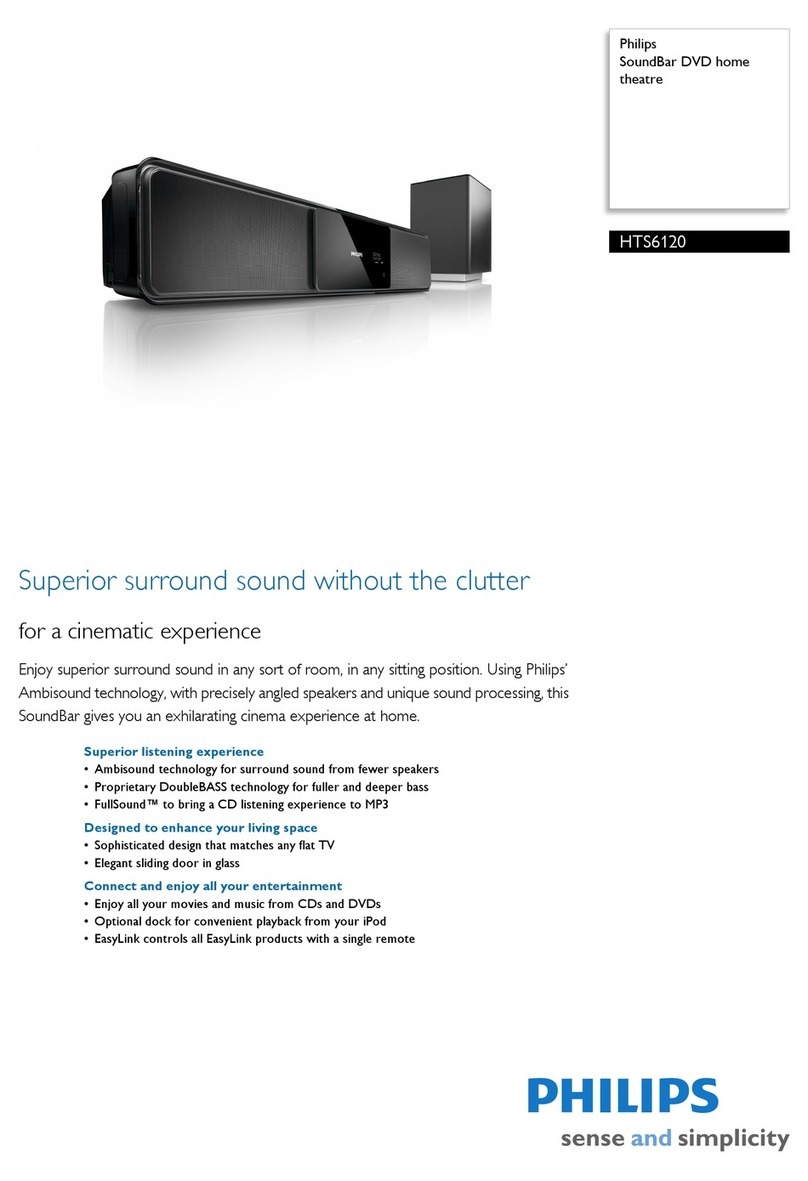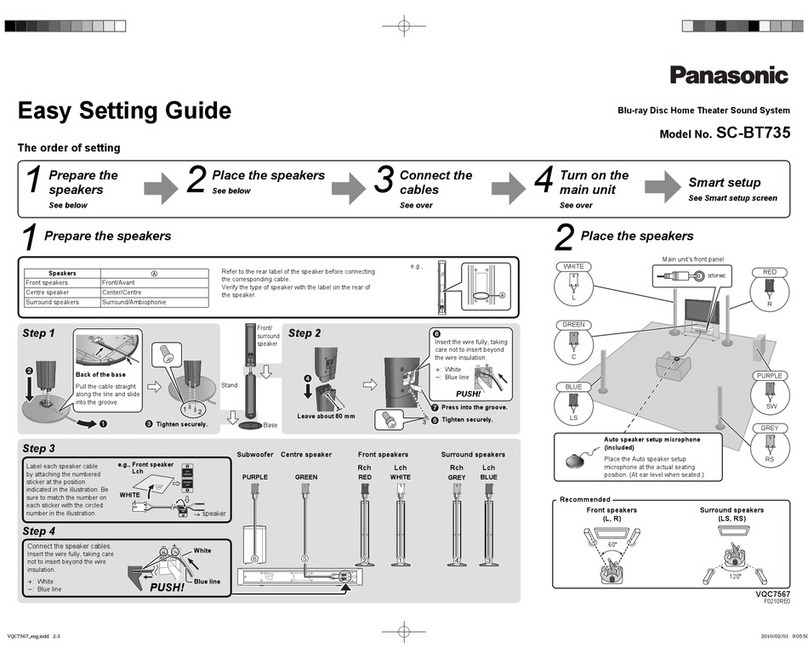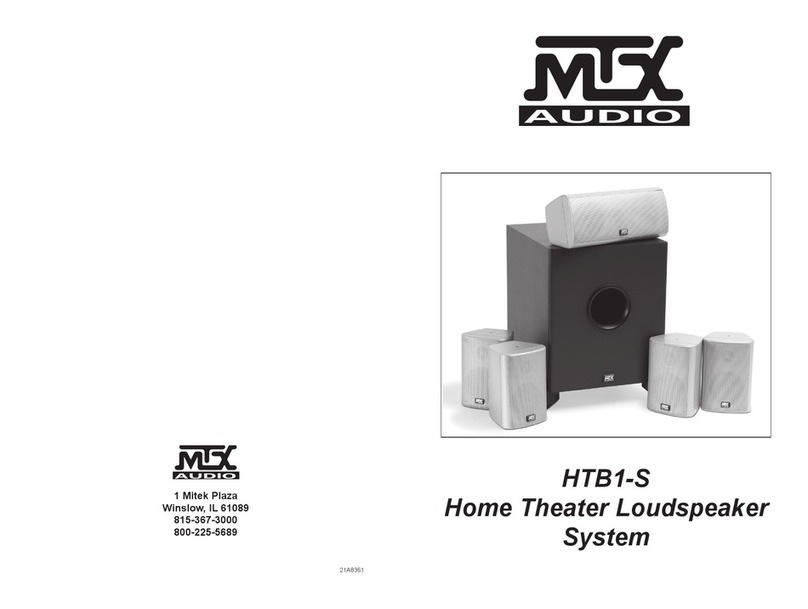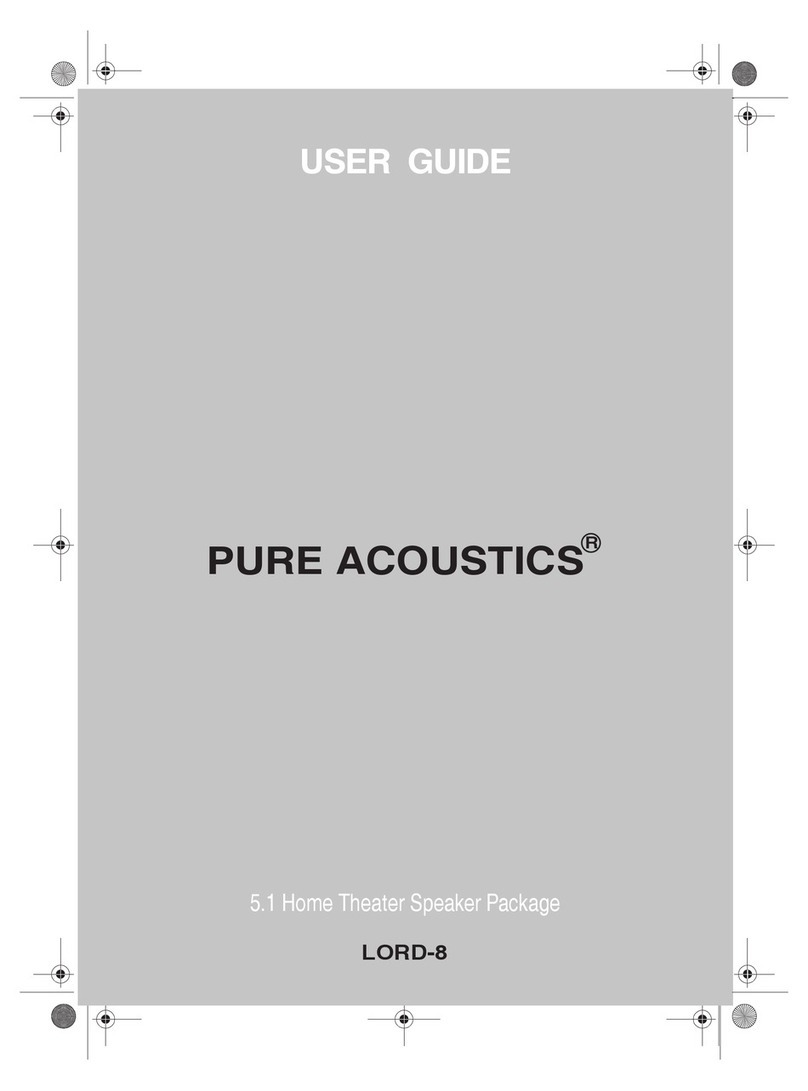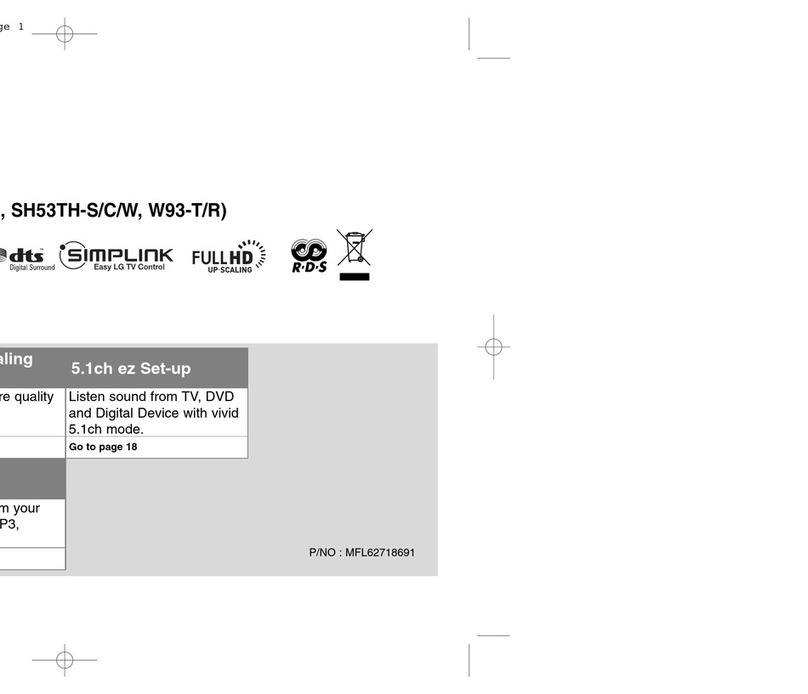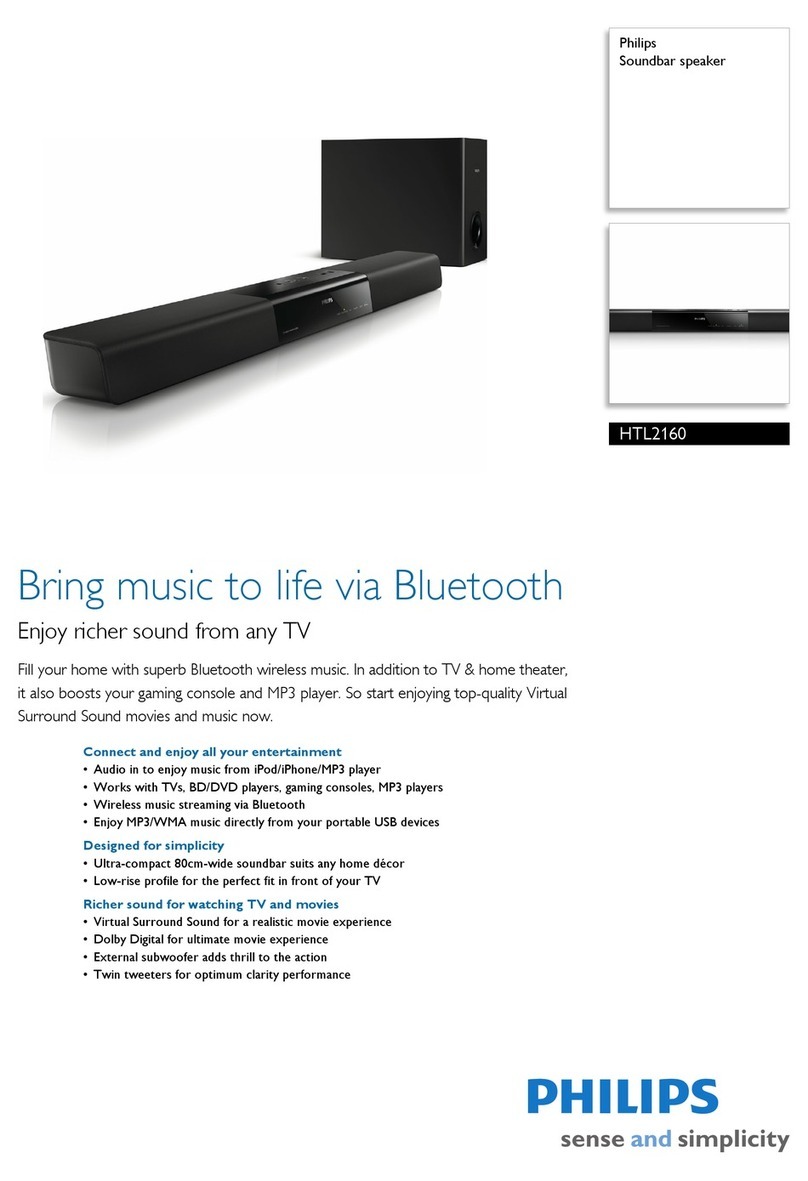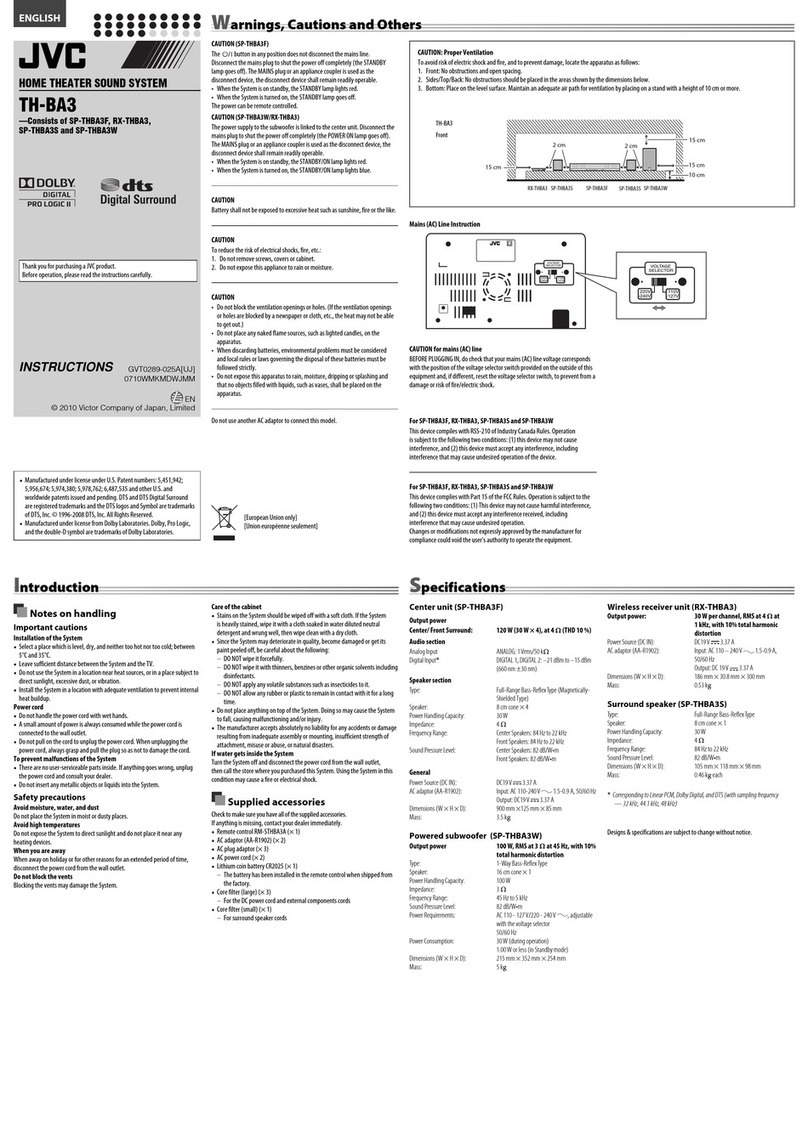i i
Read these precautions carefully before operating your NS-AP1405BL speakers.
* Since these speakers can be wall-mounted, it is essential that they are firmly secured.
Be sure to consult a reliable source about the best type of hanger for your particular
wall's construction. Secure installation is the purchaser's responsibility.
* Do not attach them to thin plywood or soft wall surface materials as the screws may tear
free, causing the speakers to fall and be damaged or result in injury.
Do not fasten the speakers to walls with nails, adhesives or other unsafe hardware.
Long-term use and vibrations may cause them to pull free.
Do not place the speakers where they are liable to be knocked over or struck by falling
objects. Stable placement will also ensure better sound performance.
Placing the speakers on the same stand or shelf as a turntable can result in feedback.
Never touch the woofer or tweeter units with your hands or expose them to excessive
physical shock. If they are dented or bent, the sound will be distorted.
Lower the power amplifier/receiver volume control before changing input sources. Never
change input sources (for example, FM to CD) at high listening levels. Always turn the
receiver/amplifier unit off when installing or removing input cables.
Anytime you note distortion, reduce the volume control on your power amplifier/receiver
to a lower setting. Never allow your power amplifier to be driven into "clipping".
Do not attempt to clean the speakers with chemical solvents as this might damage the
finish. To clean, wipe with a dry, soft cloth.
• To prevent the enclosure from warping or discoloring, do not place the speakers where
they will be exposed to direct sunlight or excessive humidity.
The YAMAHA speaker is designed to give excellent, balanced sound performance on
all channels of a Dolby DIGITAL TM or DTS TM surround system. Since surround systems
often contain a lot of very low frequency sounds, we suggest using these speakers in
conjunction with one or more powered subwoofers to get the maximum performance from
your sound system.
Please refer to your subwoofer owner's manual for proper connection instructions.
To assure low distortion on program peaks, your amplifier or receiver should be capable of
delivering at least 10 watts RMS (continuous sine-wave power) per channel.
CONNECTIONS
Check to make sure that the power has been turned off before making connections
Connect the (+) terminal of the amplifier to the (+) terminal of the Speaker
Connect the (-) terminal of the amplifier to the (-) terminal of the Speaker
Reversing polarity (+/-) will result in unnatural sound reproduction
PROCEDURE
For connections, keep the speaker cords as short as possible. Do not bundle or roll up
the excess part of the cords. If the connections are faulty, no sound will be heard from the
speakers. Make sure that the + and - polarity markings of the speaker cords are observed
and set correctly. If these cords are reversed, the sound will be unnatural and lack bass.
Main/Center/Surround Speakers
One side of the provided speaker wire
is white and the other side is black.
Connect the (+) terminals on both the
speaker and the amplifier, using the
white wire.
Connect the (-) terminals on both com-
ponents using the black wire.
White: positive (+)
Black: negative (-) White wire
How to Connect
O Press and hold the terminal's tab, as
shown in the figure.
(_ Insert the bare wire end properly into
the terminal hole
(Remove approx. 10mm (3/8")
insulation from the speaker wire.)
Good No Good
10 mm (3/8") _
Black wire (_) Release your finger from the tab to
allow it to lock securely on the cord's
wire end.
(_ Test the firmness of the connection
by pulling lightly on the cord at the
terminal.
NOTES
Do not let the bare speaker wires touch each other as this could damage the speaker, the
amplifier, or both.
Vertical position Horizontal position
Mounting the center speaker
Place the center speaker in front of the TV, on the
floor under the TV or inside the TV rack, so that it
is stable. When placing the speaker in front of the
TV, put the provided Velcro TM strips at two points on
both the bottom of the speaker and on the surface
in front of the TV to prevent the speaker from falling.
Velcro TM strips may also be used to secure the
speaker inside the TV rack.
Main and surround speakers can be
positioned horizontally or vertically.
Please install rubber feet (included)
to prevent slipping movement
Flat Panel TV
Speaker inside the TV rack
7
/
Notes
Do not place the speaker in front of the TV if the area is smaller than the bottom area of
the speaker. The speaker may fall and might cause personal injury.
If a CRT (tube-style) TV is being used, the speakers may cause some influence on the
TV picture. To prevent this, place speakers apart from the TV.
Mounting the main and surround speakers
Please place rubber feet (included) as shown in
the diagram prior to mounting the speakers on
the wall.
Fasten screws into a film wall or wall
support as shown in the figure and hang
the holes of the mounting bracket on the
protruding screws.
WARNING
o
o
o
o
Tapping screw (available
at the hardware store)
t_Make sure that the screws are securely
caught by the narrow sections of the
"keyhole" opening. Main and surround
speakers can be mounted horizontally
or vertically.
Each speaker weighs 1.26 Ibs (0.57kg). Do not mount them on thin plywood or soft
surface material. If mounted, the screw may come out of the flimsy surface and the
speakers may fall. This may damage the speakers or cause personal injury.
Do not install the speakers to a wall with nails, adhesives or any other unstable hardware.
To avoid accidents resulting from tripping over loose speaker cords, fix them to the wall.
Secure installation is the purchaser's responsibility.
This speaker is designed to be used as a main, center, surround or effects speaker.
Main speakers should be separated by a distance of 6-10 ft. If they are placed too
close together, there will be a reduction in the stereo effect.Conversely, if placed too
far apart, the so-called "middle-omission" effect wil occur and the vocal center fill will
be lost. Height of the speaker should be at least at ear level.
Center channel speaker should be placed in front of or below the TV.
Surround speakers should ideally be placed behind the listening area, at least as far
apart as the main speakers and up to 2 additional feet apart per side. The height of the
speaker should be at a minimum of ear level or, preferably, somewhat higher.
Center Channel Speaker
Left Main Speaker Right Main Speaker
', , ', ,,
i
L .. 6 - 10 feet _.... _' ......
Left Surround Speaker Right Surround Speaker
Model NS-AP1405BL
Center Speaker NS-AP1405BLC
Type 2-Way Acoustic Suspension
Speaker: Woofer 2-¾" x 2 Pulp cone and cloth surround
Speaker: Tweeter ½" Balanced dome
Frequency Range 120Hz- 50kHz
Impedance 8 ohms
Nominal Input 30w
Maximum Input 100w
Sensitivity (dB/2.83v. lm) 81dB
Crossover Frequency 17,000Hz
Dimensions (HxWxD) 3-'_/s'' x 9-7/s'' x 4-3/s'' (92x250x111mm)
Weight 2.1 Ibs (.95kg)
Finish Black
Magnetic Shielding No
Main and Surround NS-AP1405BLS
Type 2-Way Acoustic Suspension
Speaker: Woofer 2-¾" Pulp cone and cloth surround
Speaker: Tweeter ½" Balanced dome
Frequency Range 12gHz - 50kHz
Impedance 6 ohms
Nominal Input 24w
Maximum Input 100w
Sensitivity (dB/2.83v. lm) 77dB
Crossover Frequency 17,000Hz
Dimensions (HxWxD) 6-'_/s'' x 3-'_/s'' x 4-_/s'' (168x92x106mm)
Weight 1.26 Ibs (0.57kg)
Finish Black
Magnetic Shielding No
Accessories 80' Bulk Speaker Wire
:'/s" x :%2" Rubber Feet x 16 pcs
1-E7/:_2"x 2" Velcro TM x 2 pcs
*Specifications subject to change without notice due to product improvements
10-005 Yamaha-NSAP1405.indd 2 2/2/10 11:10:13 PM

